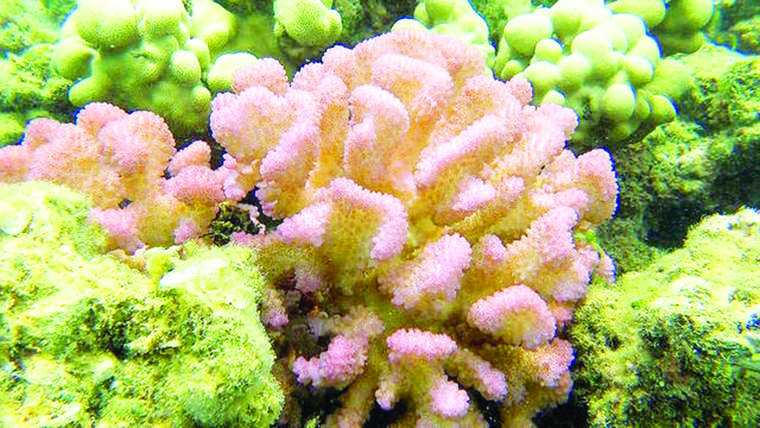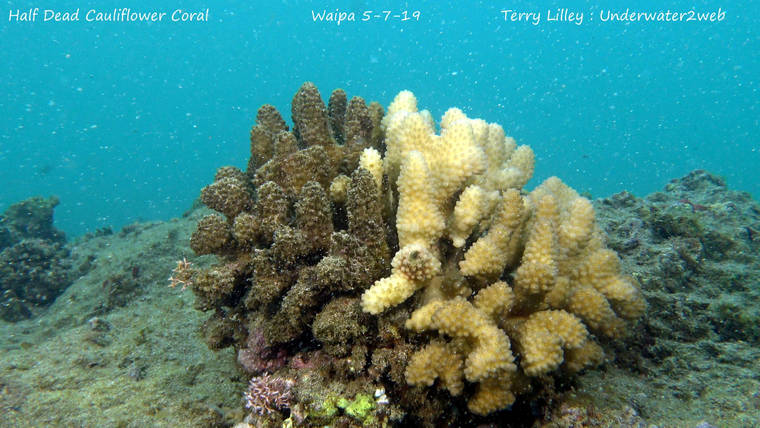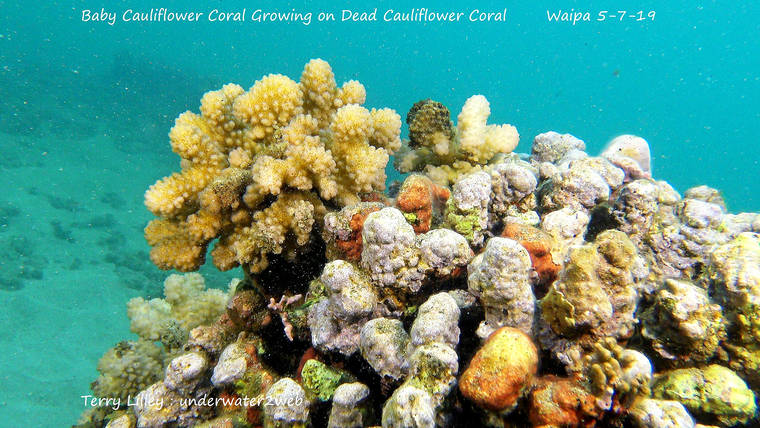LIHU‘E — While recent studies are projecting a dire future for coral reefs around the world, the Trump administration has made an agreement to increase habitat protections for several species.
The agreement, announced Thursday, is the result of an August 2019 lawsuit launched by Center for Biological Diversity, requires the National Marine Fisheries Service to publish its proposed protections by July 31.
Seven of the species listed are corals around Hawai‘i and other islands in the Pacific Ocean.
“Corals reefs are in crisis, so it’s good to see these 12 species finally getting the overdue protection they need,” said Emily Jeffers, an attorney at the center. “Coral reefs are the world’s most important marine habitats. Protecting the homes of vulnerable species like pillar and cactus corals makes our oceans healthier.”
The corals all received Endangered Species Act protection in 2014 but did not get the critical-habitat protection the law requires. Corals worldwide are experiencing dramatic declines due to climate change, pollution and overfishing. About 30% of corals have already been lost as oceans warm and turn more acidic, and scientists say the rest could be gone by the end of the century.
Endangered and threatened species that have critical-habitat protection are twice as likely to be recovering as those without it. Critical-habitat designation for corals could have immediate benefits, including improved water quality throughout the coastal zone, limits on overfishing, protections for spawning grounds, reduced harm from development and dredging, and reduced human pressure on hundreds of thousands of reef-associated species.
The agreement was filed in federal district court in Washington, D.C. It covers five species of Florida and Caribbean corals: Dendrogyra cylindrus (pillar coral), Orbicella annularis (lobed star coral), Orbicella faveolata (mountainous star coral), Orbicella franksi (boulder star coral) and Mycetophyllia ferox (rough cactus coral). It also covers seven species of Pacific corals: Acropora globiceps, Acropora jacquelineae, Acropora retusa, Acropora speciosa, Euphyllia paradivisa, Isopora crateriformis and Seriatopora aculeate.
Recent estimates of reef health in the future come from a study published by researchers from the University of Hawai‘i at Manoa, in which scientists project 70% to 90% of coral reefs will be gone in the next 20 years.
While many say the answer to saving coral reefs is planting strong, young corals in existing reefs, UH researcher Renee Setter says recent mapping where such restoration efforts would be most successful over the coming decades finds that by 2100, few to zero suitable coral habitats will remain. The preliminary findings suggest sea-surface temperature and acidity are the most important factors in determining if a site is suitable for restoration.
“Trying to clean up the beaches is great, and trying to combat pollution is fantastic. We need to continue those efforts,” Setter said in a press release about the new research. “But at the end of the day, fighting climate change is really what we need to be advocating for in order to protect corals and avoid compounded stressors.”
•••
Jessica Else, editor-in-chief, can be reached at 245-0457 or jelse@thegardenisland.com.






